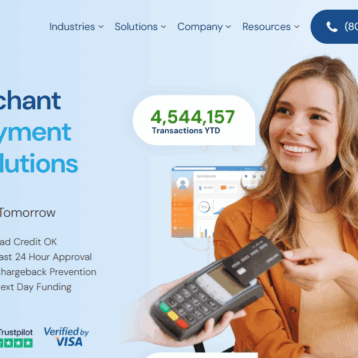The hybrid office revolution has rewritten the rules for teamwork, communication, and productivity. Combining the flexibility of remote work with the benefits of collaborative work, hybrid models require a new way of planning and delivery. Roadmapping data is fast becoming the solution for cutting through complexity so that teams can align to goals, plan resources, and react to change. This article by Yurovskiy Kirill addresses the ways technology and data are changing the future of hybrid workspace rooms and is full of useful tips on smart working in teams.

1. The Shift from On-Site to Hybrid Work Models
The COVID-19 crisis precipitated the shift toward hybrid work cultures, blending office and work-from-home. The change has been accompanied by new challenges, such as maximizing collaboration, promoting fair contribution, and transferring productivity across geographies. Roadmaps that use data help organizations navigate such challenges by providing them with an open road map to make informed decisions allocate resources and ensure alignment and productivity of hybrid teams.
2. Real-Time Data Integration for Dynamic Roadmaps
There has to be real-time data integration where it generates adaptive roadmaps that adjust dynamically in real time based on hybrid team dynamics. Jira, Trello, and Asana are but a few of the software out of many that are used by teams in a bid to track their progress, identify bottlenecks, and re-prioritize in real time. With data coming in from infinite sources, from project management platforms all the way to communications and tracking of performance indicators, companies design roadmaps in an attempt to catch the issues in their team and their project.
3. AI Tools for Team Alignment and Goal Monitoring
Artificial intelligence technology is transforming the way hybrid teams stay connected and updated. Among some of the computer software using AI in team productivity training, project success forecasting, and proposing improvements are Monday.com and ClickUp. For example, AI recognizes a low-performing team and proposes reorganizing resources or reprioritizing tasks. Such proposals deflect hybrid teams and reach milestones.
4. Resource Management on a Hybrid Platform
Hybrid team efficiency depends on the optimum utilization of resources. Roadmaps of information enable companies to rebalance resources based on the priorities and demands of the current day. AI, for instance, is capable of approximating team workload and proposing a redistribution of workloads in order to reassign productivity. Data can define areas of skills shortfall and can be used to make talent decisions regarding recruitment, training, or contracting. It will be capable of providing hybrid teams with the needed resources to fuel objectives.
5. Overlappings in Time Zones and Asynchronous Working
Collaboration with teams across time zones is probably the biggest hybrid working challenge. Data road mapping supports collaboration time and asynchronous working. Clockwise and World Time Buddy is machine learning-powered artificial intelligence software that leverages machine learning to schedule meetings and workflow, focusing on eliminating distractions and maximizing productivity. Organizations can leverage data to make collaboration seamless for distributed teams.
6. Remote Design Thinking Workshops
Design thinking workshops are the core of innovation but need to be held in a hybrid setting with planning. To collaborate remotely in real-time, data-driven tools like Miro and MURAL facilitate collaboration. The tools leverage AI in planning, ideation, and tracking progress so that remote teams can exchange well-considered ideas. The process allows freedom of imagination and engagement in hybrid teams.
7. Emotional Intelligence as a Virtual Team Leader
Hybrid team leadership requires high EQ. Emotional needs and team relationships are measurable using data tools. Sentiment tools, for example, track morale in a team by measuring communication patterns, while AI-powered surveys track employees’ well-being. Leaders establish trust, collaboration, and high-quality work culture through data.
8. Hybrid-Ready Agile Methodologies
Agile practices are easiest to implement in hybrid work patterns but must be modified to meet the unique needs of distributed teams. Data-driven roadmaps enable teams to experience Agile practices such as sprint planning and retrospectives in a hybrid pattern. Jira and Azure DevOps are a couple of software products that provide real-time visibility into project status so Agile teams can remain in harmony and be responsive.
9. Distributed Workforce Risk Management
Risk management for hybrid workforces must be proactive. Data-driven risk roadmaps allow the realization of the most likely risks that might happen, i.e., breakdown in communication, lack of resources, or data loss. Risk management solutions through AI anticipate and prevent risks using predictive insight from diverse sources before they become runaway situations. This allows smooth, secure hybrid team operations.
10. Future of Hybrid Product Management
The future of hybrid product management will be technology and data integration. With further innovations in technology like AI and machine learning, companies will be able to leverage more sophisticated planning tools, decision tools, and collaboration tools. It will be focused on creating fluid, open, and responsive platforms so that the teams can deliver from anywhere.
Data-driven roadmaps are the solution to hybrid work challenges. Organizations can create changing and flexible plans with teams, resources, and risk-diminishing alignment through real-time data, AI capabilities, and Agile principles. As more employees embrace hybrid work, data-driven methodology will be one of the key ingredients to remote teams’ success.
Hybrid workplace transformation is an age of co-creation and innovation. Organizations possess the ability to unleash the untapped human potential and build a future of work that is inclusive, adaptable, and productive with data-driven roadmaps. Hybrid work success is a process that has to be undertaken day in and day out, but if one is equipped with the right tools and approach, anything is possible. The age of work is here and it’s fueled by data.










